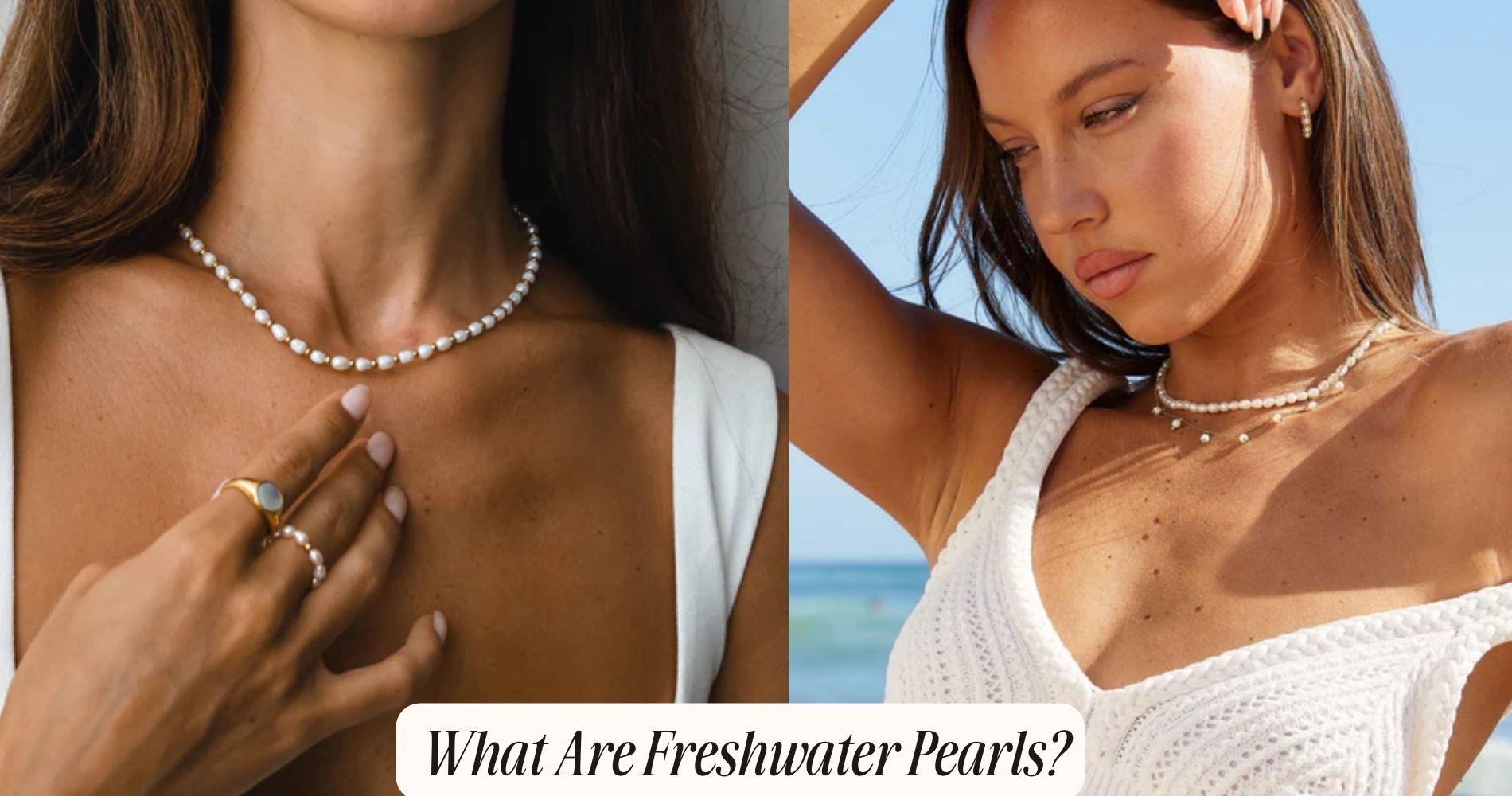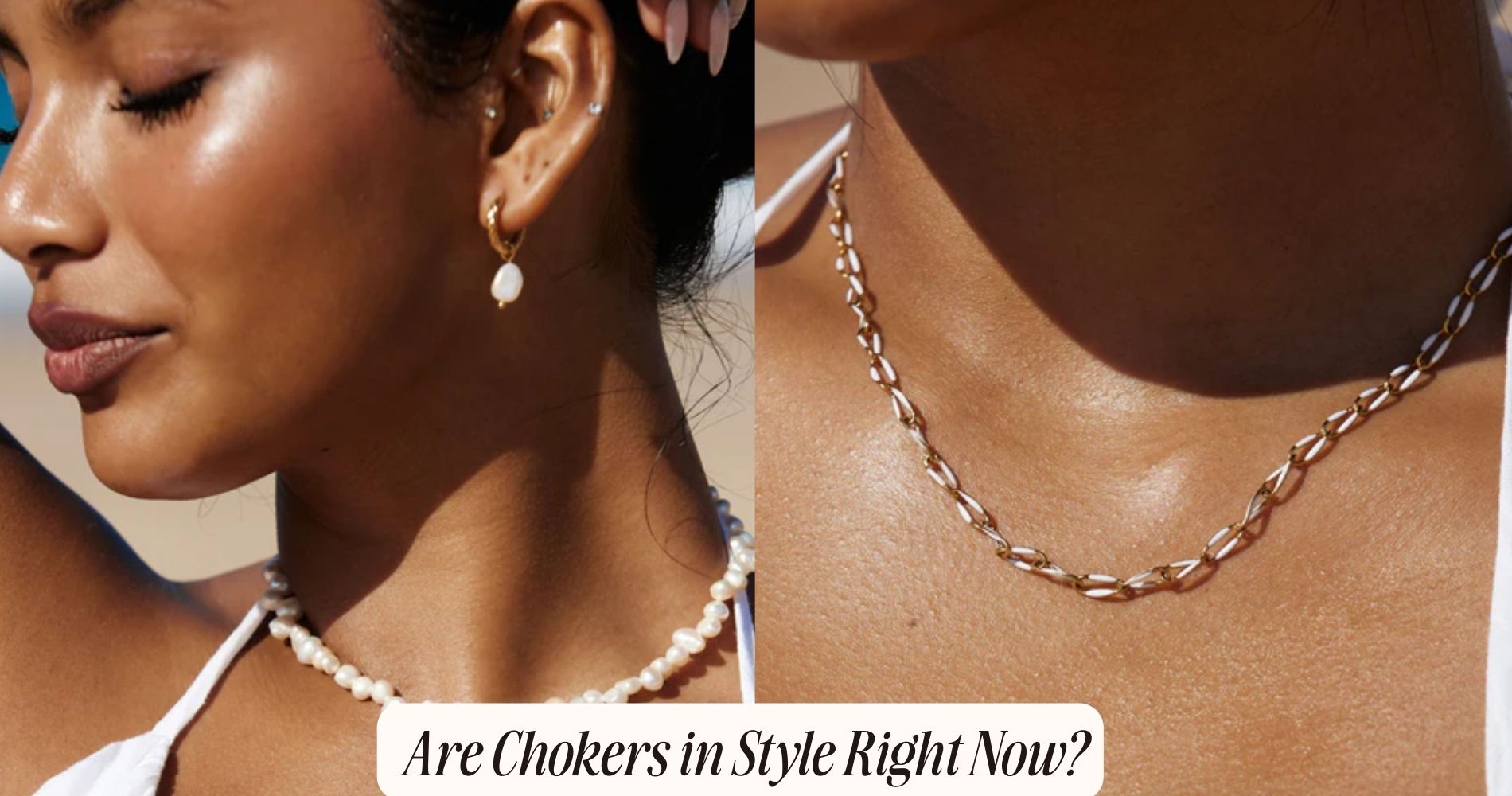
What Are Freshwater Pearls?
Origin and Cultivation
Freshwater pearls, primarily cultivated in China, originate from mussels in lakes, rivers, and ponds, utilizing advanced techniques to enhance their quality and yield. You'll find that the primary mussel species used for cultivation is the Hyriopsis cumingii, commonly known as the triangle shell mussel. This species is preferred due to its ability to produce multiple pearls simultaneously, optimizing the farming process.
In terms of farming techniques, you'll see that the nucleation process is essential. Technicians insert a small piece of mantle tissue from a donor mussel into the host mussel. This tissue acts as an irritant, prompting the host mussel to secrete nacre around it, forming a pearl. The mussels are then placed in controlled freshwater environments with ideal conditions for growth, such as proper water temperature and pH levels.
Regular monitoring is critical. You'll need to make sure the mussels are healthy and free from parasites. Harvesting occurs after 1.5 to 2 years, depending on the desired pearl size. By employing these precise techniques, you can achieve high-quality freshwater pearls with consistent luster and shape, meeting market demands effectively.
Varieties and Colors
You'll discover that freshwater pearls come in a diverse array of varieties and colors, each influenced by the specific mussel species, water conditions, and cultivation techniques used.
The unique hues of freshwater pearls range from classic white and cream to more vibrant natural shades like lavender, peach, and gold. These colors arise due to variations in the nacre composition and the organic pigments within the mussels.
When exploring the varieties, you'll encounter pearls produced by different mussel species, such as Hyriopsis cumingii and Hyriopsis schlegelii, each contributing to distinct attributes in the pearls. The water conditions, including mineral content and temperature, further influence the resultant pearl colors.
For instance, higher mineral concentrations can yield more lustrous and colorful pearls. Cultivation techniques also play a pivotal role in determining color. Farmers might enhance natural shades through techniques like selective breeding or altering water parameters.
Some pearls may even exhibit overtones, subtle secondary colors that add complexity to their appearance. Understanding these factors helps you appreciate why no two freshwater pearls are exactly alike, making each one a unique specimen.
This diversity not only adds to their allure but also enhances their value in the jewelry market.
Shapes and Sizes
Beyond their enchanting colors, the shapes and sizes of freshwater pearls exhibit remarkable variety, influenced by the same factors that affect their hues. You'll find shapes ranging from perfectly round to the irregular and unique baroque shapes. Baroque pearls, with their asymmetrical forms, are particularly prized for their individuality and organic appeal.
Size also plays a significant role. Freshwater pearls can vary from tiny seed pearls, which are typically under 2mm in diameter, to larger specimens that can exceed 10mm. Seed pearls are often used in intricate jewelry designs due to their diminutive size and delicate appearance. The growth environment and the specific mollusk species largely determine these dimensional attributes.
The cultivation process impacts both size and shape. For example, nucleated pearls tend to be more round, while non-nucleated pearls often develop into baroque shapes. The duration pearls remain in the mollusk also affects their final size; longer cultivation periods usually yield larger pearls.
Understanding these variations helps you appreciate the complexities of freshwater pearl cultivation and the skill required to produce high-quality pearls with desirable shapes and sizes. This knowledge can guide your selection, whether you prefer the classical symmetry of round pearls or the distinctiveness of baroque shapes.
Luster and Quality
Luster, the way a pearl reflects light, is a critical determinant of its quality and overall appeal. When evaluating freshwater pearls, you need to assess how sharply and brightly they reflect light. High-quality pearls exhibit a mirror-like luster, while lower-quality ones appear dull and chalky. Light reflection directly correlates to the pearl's nacre thickness and its surface smoothness.
Surface imperfections also play a significant role in determining a pearl's value. A flawless surface enhances light reflection, contributing to a more radiant luster. In contrast, pearls with numerous blemishes, such as pits, spots, or ridges, scatter light irregularly, diminishing their visual appeal. It's important to examine pearls under adequate lighting to accurately gauge their luster and identify any surface imperfections.
Pearls with exceptional luster and minimal surface imperfections are rare and highly sought after. When selecting freshwater pearls, prioritize those with a high degree of light reflection and a smooth surface. This guarantees that the pearls not only look stunning but also retain their value over time.
Freshwater Vs Saltwater
Understanding the distinct environmental conditions and biological processes that influence their formation and characteristics is essential when comparing freshwater and saltwater pearls. Freshwater pearls form in rivers, lakes, and ponds, whereas saltwater pearls develop in marine environments, specifically in oysters found in oceans and seas. These habitat differences profoundly affect the pearls' growth rates, shapes, and overall qualities.
Freshwater pearls generally grow in mussels exposed to varying temperatures and mineral compositions. These environmental factors create pearls with diverse shapes and a broader color spectrum. In contrast, saltwater pearls, nurtured in more stable saline conditions, often exhibit higher luster and rounder shapes due to the consistent environmental parameters.
The nacre quality in both types is also influenced by these habitat differences. Freshwater pearls usually have thicker nacre because mussels can produce it over several years in freshwater environments. Saltwater pearls, however, often display thinner nacre as they're harvested relatively quickly to prevent damage from marine predators and environmental factors.
Jewelry Applications
Freshwater pearls offer versatile options for jewelry designers, ranging from classic necklaces and bracelets to more intricate brooches and earrings. You'll find that these pearls come in a variety of shapes and sizes, allowing for creative freedom in design. Their adaptability makes them a favorite in contemporary fashion trends, where innovation and uniqueness are highly valued.
You can utilize freshwater pearls to create statement pieces that align with current fashion trends. For instance, layered pearl necklaces can add sophistication to casual outfits, while pearl-studded earrings can complement evening wear. The varied hues and luster of freshwater pearls make them perfect for both minimalist designs and elaborate, multi-gem compositions.
Cultural significance plays an important role in their application as well. In various cultures, pearls symbolize purity, wealth, and wisdom. Incorporating freshwater pearls into your designs can add an extra layer of meaning, making your pieces not just visually appealing but also emotionally resonant. This dual appeal—both aesthetic and symbolic—enhances the marketability of your jewelry.
Caring for Freshwater Pearls
Proper care is crucial to maintain the quality and longevity of your freshwater pearls. To clean them, use a soft, lint-free cloth slightly dampened with water. Avoid harsh chemicals, ultrasonic cleaners, and steamers as these can damage the nacre. For more thorough cleaning, mix a mild soap with lukewarm water. Gently wipe the pearls with a cloth dipped in this solution, then rinse with a damp cloth and pat dry immediately. Make sure that the pearls are completely dry before storing them.
Storage methods are equally important. Always store your freshwater pearls in a soft, lined jewelry box or a cloth pouch to prevent scratches. It's advisable to keep them separate from other jewelry to avoid abrasion. Pearls need a certain level of humidity, so avoid storing them in airtight containers which can dry out the nacre. If you don't wear your pearls often, it's beneficial to occasionally expose them to natural humidity by wearing them.
Additionally, avoid direct contact with cosmetics, hairspray, and perfume. These substances can erode the nacre's luster. By following these cleaning techniques and storage methods, you'll make certain that your freshwater pearls remain radiant and durable.
Conclusion
By exploring freshwater pearls, you can appreciate their unique charm and versatility. Their origin and cultivation techniques, diverse varieties, and stunning colors offer numerous possibilities.
With varying shapes, sizes, and a distinctive luster, they stand out in any jewelry piece.
Contrasting freshwater to saltwater pearls highlights their unique qualities. Proper care guarantees longevity and brilliance.
Immerse yourself in the world of freshwater pearls and you'll discover an exquisite blend of nature and craftsmanship that's perfect for any collection.























Leave a comment
This site is protected by hCaptcha and the hCaptcha Privacy Policy and Terms of Service apply.